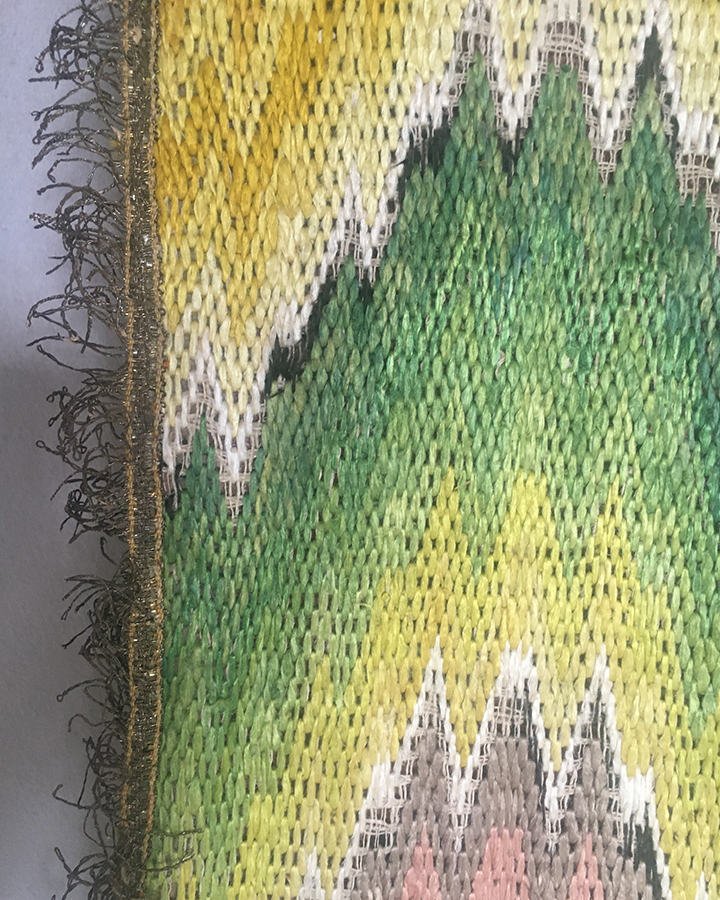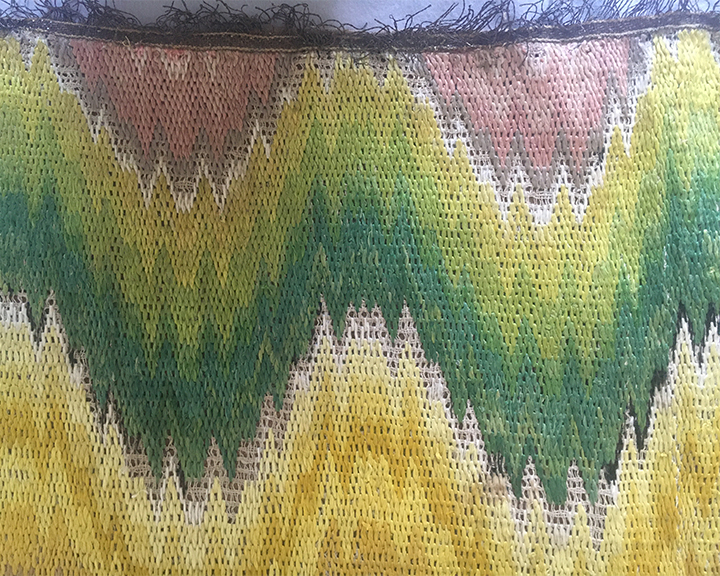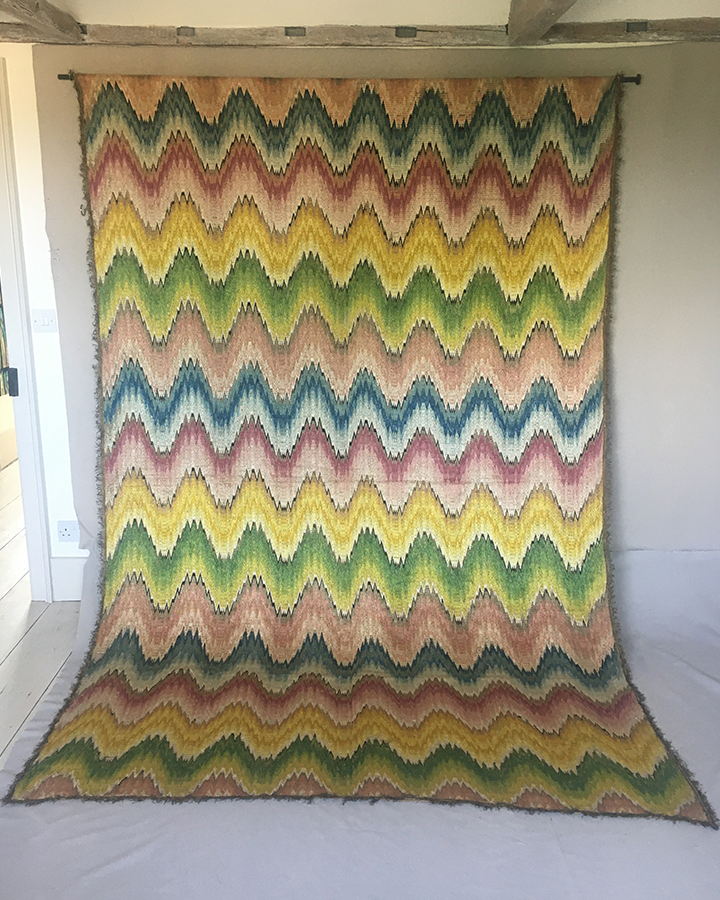




This is quite fantastic and would have looked stunning covering a wall in a domestic setting. Or it might have been for a table as there is original tinsel braid on all four sides. The twenty three shaded colours are bright and attractive.
Bargello or Flamestitch embroidery was particularly popular for furnishings during the Italian Renaissance, worked in Florence it is also called Florentine work. It is not clear which termonology is correct, as different descriptions can be used. This type of work is also called Irish stitch (particularly in America) or Point d'Hongire (Hungary). It was again popular during the seventeenth and eighteenth century and often worked by ladies of the house.
A pattern was not required to be drawn on the loose canvas as a counted stitch was worked. The ground could be quickly covered with floss silks or wools, using long and short stitches, with a blunt tipped needle, in a zig zag or flamestitch design. The embroiderer did have to concentrate very hard to not make mistakes. During the eighteenth century a greater number of colours were used. Flamestitch was popular as wall or bed hangings and for upholstery. Small personal items such as men's wallets, reticules, book covers and shoes can also be found in museums and collections covered in this embroidery.
Historic UK properties where flamestitch can still be seen hanging are listed below
The hanging with five different coloured rows of flamestitch including green, yellow, pink, blue and coral, each with four graduating shades, plus touches of light brown and each row outlined in black, a toal of twenty three shades, all in long and short floss silks, worked on a loosely woven hemp? ground, the four edges with a narrow tinsel braid attached, lined in pale pink linen.
9ft 6 in x 6ft; 2.95 x 1.90
Really excellent. Unfaded, with bright clear colours. Some of the black silks defining each row of colour have eroded, revealing the loose canvas below. The iron in black dye very often dsappears on old textiles. The lower four rows of flamestitch have almost all lost the black, which now appears to be light brown, revealing the canvas below. Really this hardly notices when hung, and it is the beauty of the colours and design which shine through. Lots of photos available.
* The National Trust Book of Furnishing Textiles by Pamela Clabburn 151.
Guide books to Parham, Chastleton House.
Parham Park, West Sussex. In the West Room there is a dado hanging of Italian wool, in Flamestitch design (1560-85). The Ante-Room has a Hungarian Point needlework in silk and wool, 17th century. In the Green Chamber there are flame stitch bed hangings dating to c 1620.
National Trust Chastleton House, Oxfordshire has a set of flamestitch or 'Irish stitch' hangings from seventeenth century on the walls in the Fettiplace Closet. Worked in twelve colours on a jute ground, these are almost certainly the bed hangings, listed in 1633, as covering beds and seat furniture.
Clandon Park, Surrey for bedhangings and chair coverings.
Lady Anne Clifford in her diary of 1619 tells of the 'Irish stitch cushion' she worked when incarcerated at Knole.*
Textiles in America by Florence M Montgomery p 265/267.
All images and text © meg-andrews.com 2021